Sizzling Stones and Savory Crusts: Unveiling the Charms of persian naan 'Sangak'
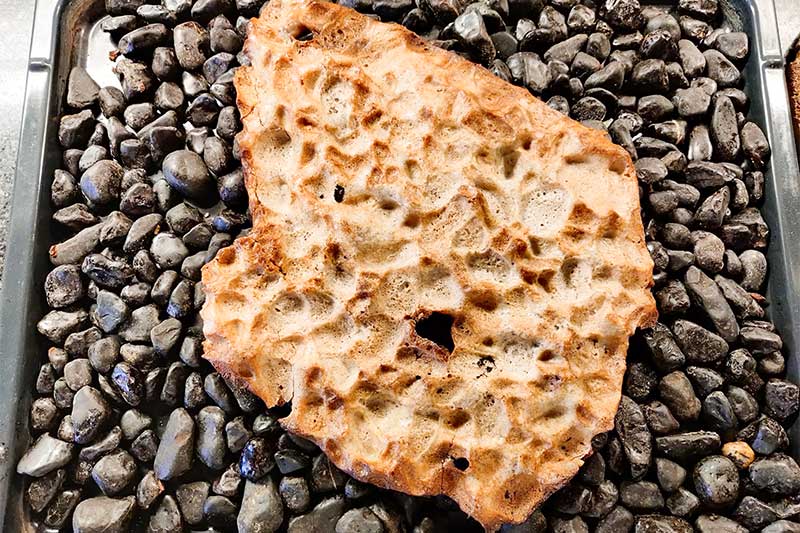
Hi friends! I am back and today I want you to get prepared for a culinary adventure like no other with 'Sangak' - the Persian bread that takes toasty traditions to new heights.

Imagine dough stretched by hand, placed on scorching hot stones inside a traditional persian tandoor oven. As it bakes, it crackles and dances, resulting in a crispy yet soft bread with an irresistible aroma. But 'Sangak' is more than a delicious treat; it's steeped in cultural significance, bringing iranian families together for centuries and sparking joyous conversations. So, today I'm going to show you how to make this magical bread, and let its flavor transport you to a place where deliciousness and laughter intertwine.

To make this bread from scratch, you will need wholemeal flour, sourdough starter, which should be prepared 4 days before actual baking, yeast, a pinch of salt, and two cups of water.
Sourdough starter preparation (4 days before actual baking):
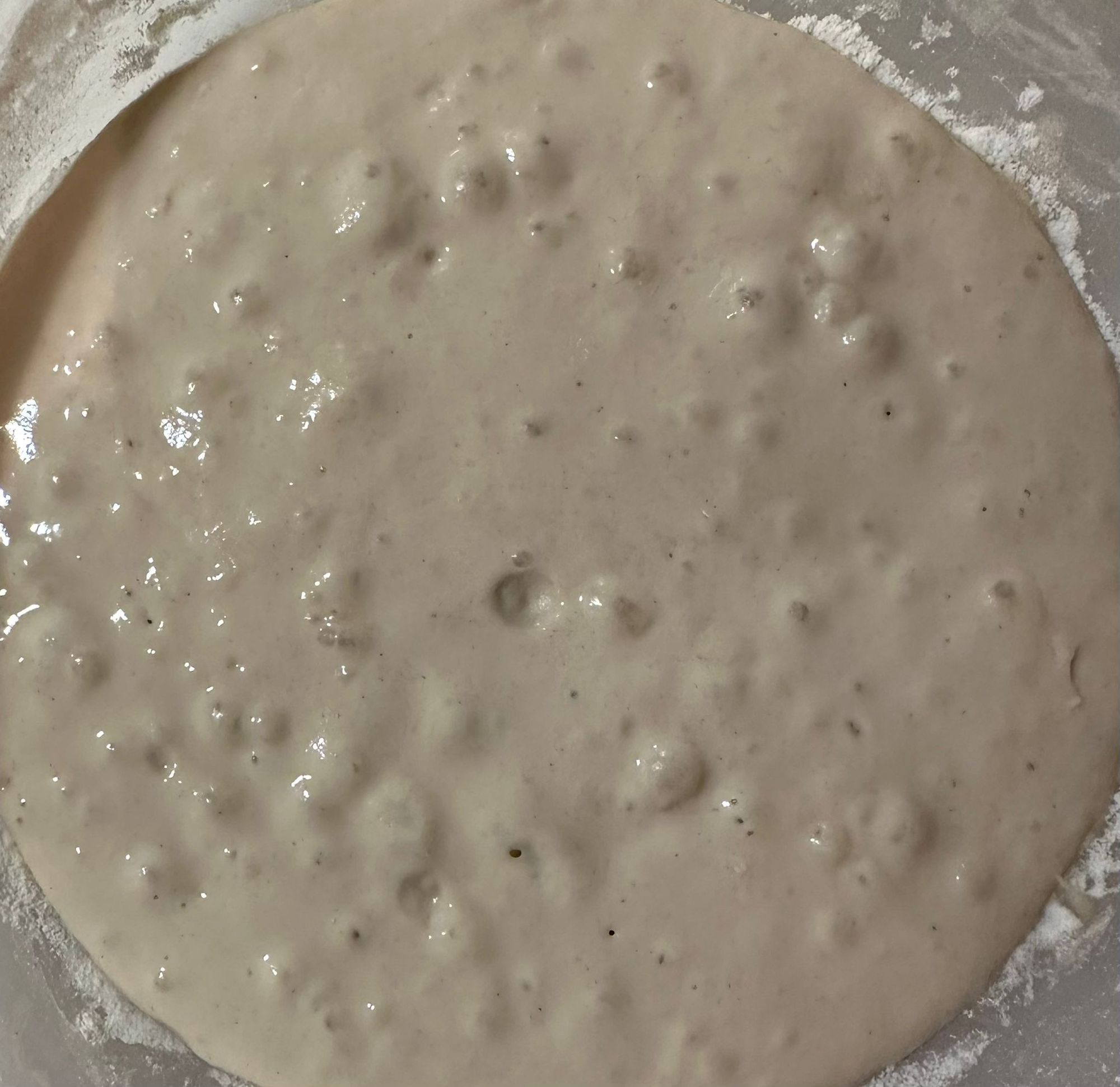
Ingredients:
- 50 grams of whole wheat flour
- 50 grams of all-purpose flour
- 100 grams of filtered water (at room temperature)
Preparation Method:
- Day 1: In a clean glass jar or container, combine 50 grams of whole wheat flour with 50 grams of all-purpose flour.
- Add 100 grams of filtered water to the flours and mix well until there are no dry spots. The consistency should be similar to a thick pancake batter.
- Cover the jar loosely with a clean kitchen towel or plastic wrap and let it sit at room temperature, around 70-75°F (21-24°C), for 24 hours.
- Day 2: After 24 hours, you may start to see some small bubbles on the surface. Discard about half of the starter (approximately 100 grams) and add 50 grams of whole wheat flour and 50 grams of all-purpose flour to the remaining starter.
- Pour in another 100 grams of filtered water and stir until well combined. Again, the mixture should resemble a thick pancake batter.
- Cover the jar loosely and allow it to sit at room temperature for another 24 hours.
- Day 3: By now, the starter should be showing signs of fermentation, such as increased bubbles and a slightly sour smell. Repeat the discarding and feeding process by removing and discarding around half of the starter (100 grams), leaving behind approximately 100 grams in the jar.
- Add 50 grams of whole wheat flour and 50 grams of all-purpose flour, along with 100 grams of filtered water. Mix well.
- Cover the jar loosely and let it rest for another 24 hours at room temperature.
- Day 4: At this stage, the starter should be quite active, bubbly, and have a strong sour smell. Repeat the discarding and feeding process as before, discarding about half (100 grams) and adding 50 grams of whole wheat flour, 50 grams of all-purpose flour, and 100 grams of filtered water.
- Cover the jar loosely and continue the feeding process every 24 hours for at least a week, until your starter is consistently active, doubling in size, and exhibiting a pleasant sour aroma.
- Once your starter is reliably active, you can store it in the refrigerator and feed it once a week or as needed to maintain its vitality. Remember to discard a portion of the starter before each feeding to keep the overall volume manageable.
Note: The feeding ratio mentioned above (1:1:1) can be adjusted depending on the amount of starter you wish to maintain. Additionally, room temperature and humidity can influence fermentation times, so be flexible and observe the behavior of your starter throughout the process.
Making the 'sangak':
Ingredients:
- Whole wheat flour: 700 grams
- Water: 2 cups (filtered or lukewarm)
- Salt: 1 teaspoon
- Instant yeast: 5 grams
- Sourdough starter (already made and ready to be used) - 2 tbspn
Preparation method:
- In a large mixing bowl, combine the whole wheat flour, salt, instant yeast, and sourdough starter.
- Gradually add the water while stirring with a spoon or spatula until the dough starts to come together.
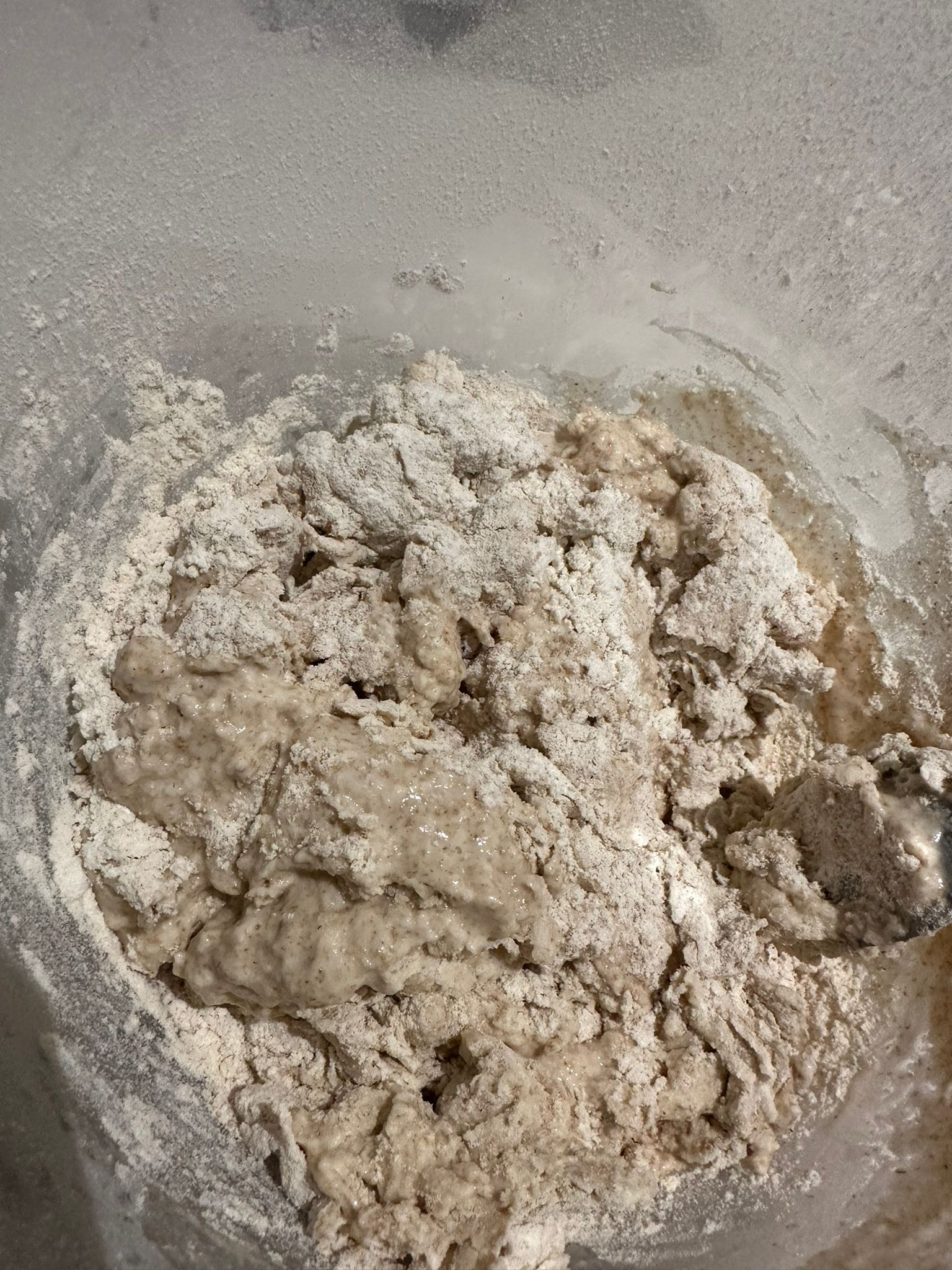
- Once the dough is formed, transfer it to a clean and lightly floured surface.
- Knead the dough for about 10-15 minutes until it becomes smooth and elastic.
- You will need to leave 1 hour between each kneading episode and repeat twice.
- Shape the dough into a ball and place it back into the mixing bowl. Cover the bowl with a damp kitchen towel or plastic wrap.
- Allow the dough to rise at room temperature for about 2-3 hours until it doubles in size.
- Preheat the oven to its highest temperature, ideally around 500°F (260°C). Place a baking stone or an inverted baking sheet in the oven to heat up.
- Once the dough has risen, gently deflate it and divide it into smaller portions (depending on the desired size of the bread).
- Take one portion of the dough and stretch it by hand into an elongated oval shape, about 1/4 inch (0.6 cm) thick.
- Lightly dust a baker's peel or the back of a baking sheet with flour or semolina. Carefully transfer the stretched dough onto the peel or baking sheet.
- Using a sharp knife or little stones, make holes across the dough to create a traditional 'Sangak' pattern.
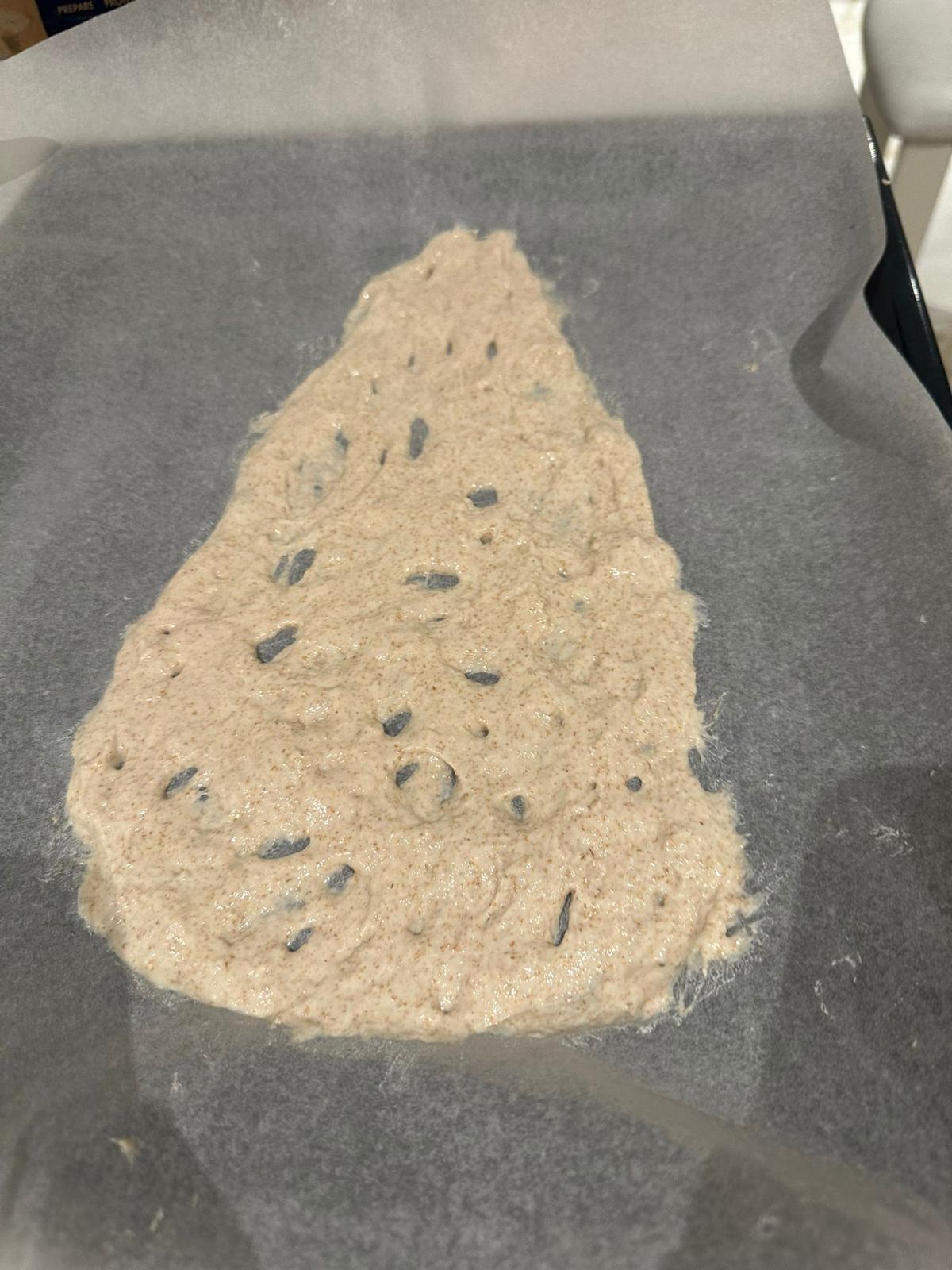
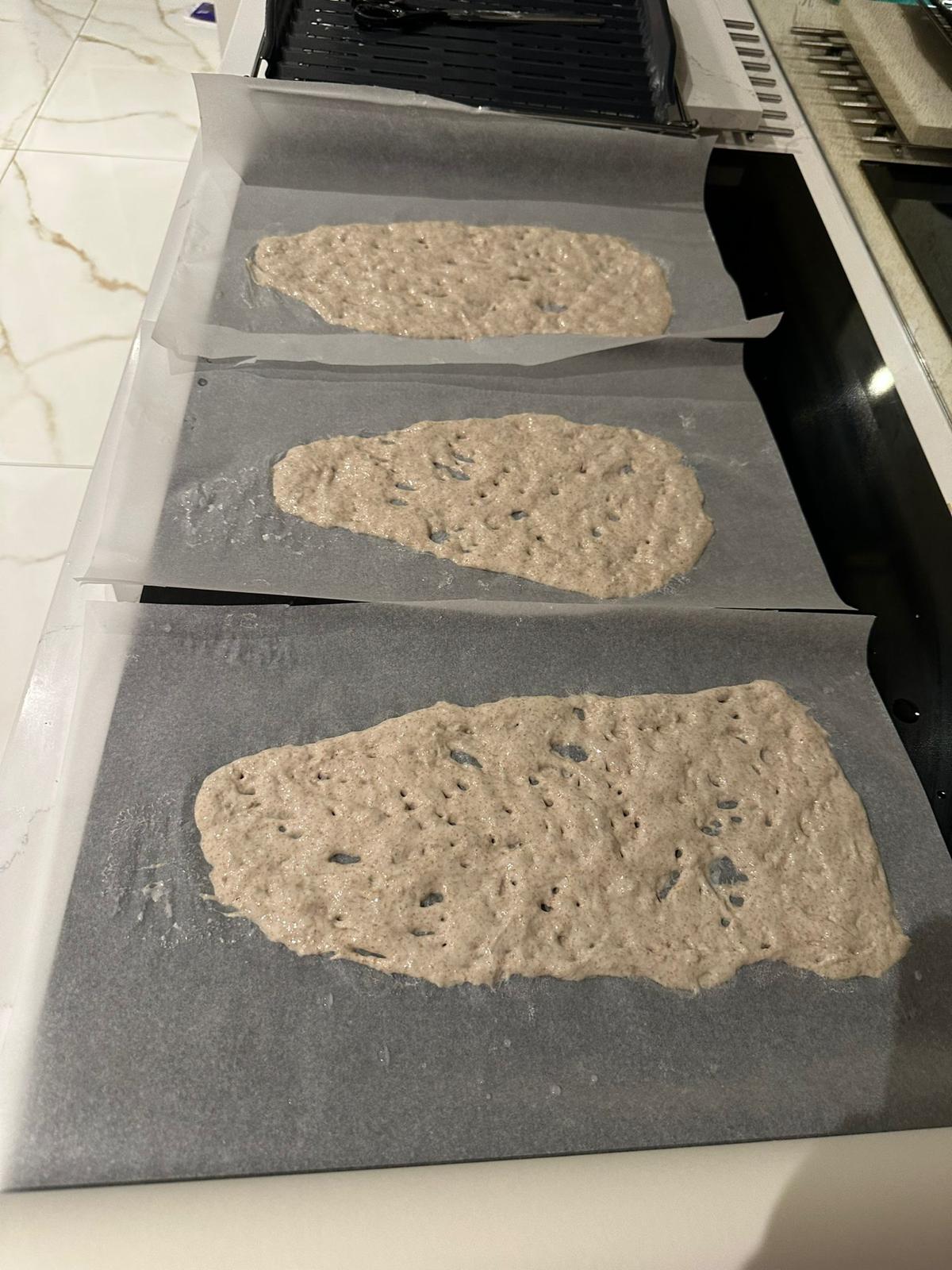
- Open the oven and slide the dough with the peel or baking sheet onto the preheated baking stone or inverted baking sheet.
- Bake the bread for about 10-15 minutes until it develops a golden-brown color.
- Remove the baked bread from the oven and transfer it to a wire rack to cool. Repeat the process with the remaining dough portions.
- Once the Sangak bread has cooled down, it is ready to be enjoyed. Serve it fresh with your favorite dips, spreads, or alongside a delicious meal!
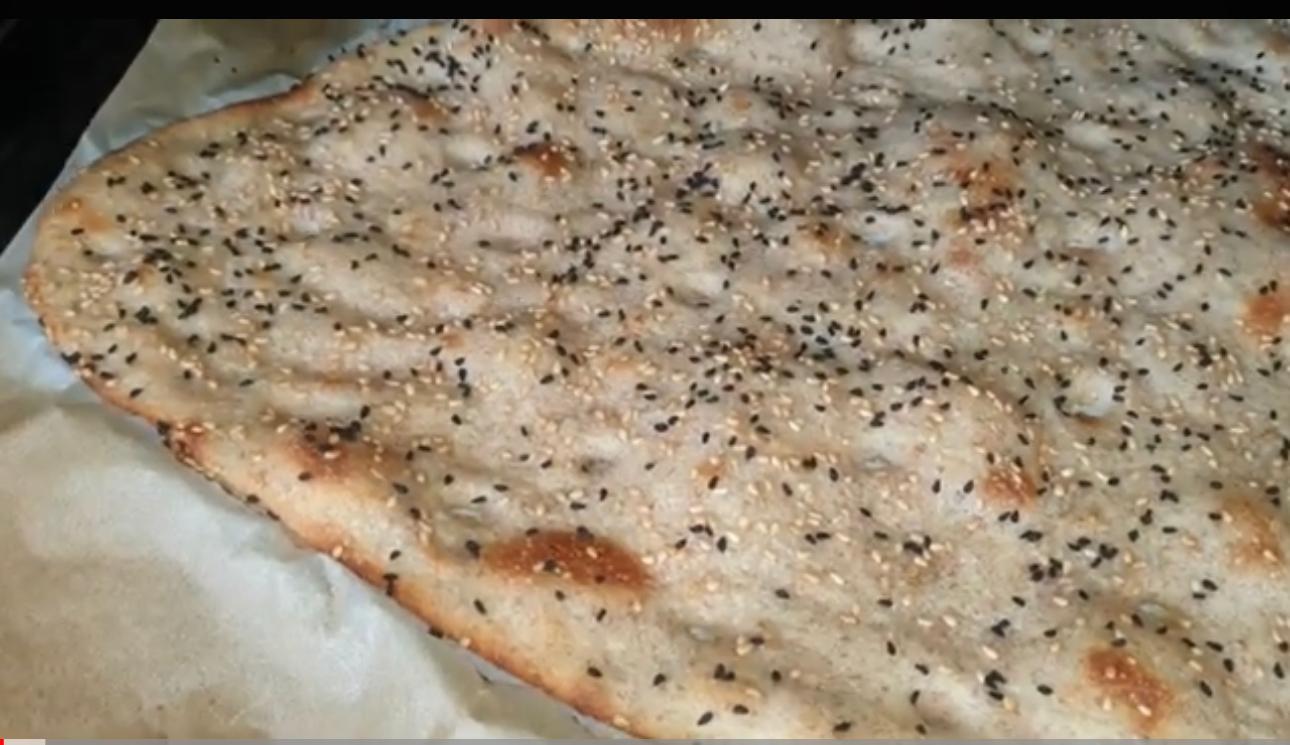
Note: It's important to adjust the baking time based on your oven's temperature and the desired level of crispiness for the bread. Keep a close eye on the bread while it bakes to prevent burning.
